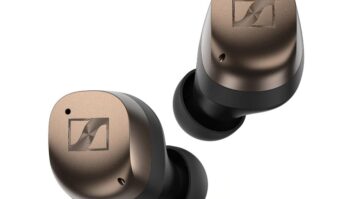One of the biggest success stories of the past year or so in the laptop space has been the Chromebook. A combination of a dirt-cheap price, built-in full-size keyboard and tablet-like functionality seems to be attracting budget-minded students, and home users, in droves, according to the latest market research studies.
So it’s understandable that most PC makers looking to hold onto their market share have started to venture into the strange new world of the Chrome OS.
Toshiba, long noted for its Satellite laptop PC lines, is no exception, and its latest Chromebook 2 offerings seem to address most of the criticisms raised by users of its first offerings earlier this year, as well as those raised about some rivals’ Chromebooks.
The Chromebook 2 family consists of two models. The top-end 13.3-inch FullHD model includes an IPS LCD screen, and the entry unit features a similarly sized 1,366 by 768 version with a TN LCD screen. The IPS version offers wider viewing angles and a sharper overall image.
Both officially hit retail last week at suggested retails of $329 and $249, respectively, and were presented for review to key media at a recent New York launch party.
The new Chromebook 2s are also thinner and lighter than previous versions announced in January, with each unit weighing around 2.96 pounds and measuring 0.76 inches thin. Both also feature one USB 2.0 and one USB 3.0 port, full-size HDMI output, headphone jack, HD webcam and an SD card slot. Connectivity is supported with Bluetooth 4.0 and 802.11ac Wi-Fi capability.
Toshiba also provides a range of color accents for the new models with snap-on cover choices in charcoal, aqua and rose.
Toshiba’s first FullHD Chromebook steps up with a bright, impressive picture, when provided a FullHD image online (not always easy to find with stepped down bit rates), that belies the light weight and very thin form factor of the unit.
The inclusion of higher resolution usually makes for a big drain on battery life, but Toshiba has minimized that by stepping down from an Intel Haswell to Intel N2840 Bay Trail processor, while somehow managing to limit any real operational hiccups.
The Bay Trail processor helps the standard version achieve an average battery charge life of up to 11.5 hours, while the FullHD version will keep a charge for an average of up to 9.5 hours.
The response time of the FullHD version that I tested was lighting fast from startup to loading the first page. Boot-up time took just a few seconds, and the Chrome browser loads in just three to four seconds (depending on WiFi and Internet speeds) from click to screen.
More impressive is the sound. Toshiba partnered with portable audio specialists Skullcandy to design a special built-in speaker system that produces rich, full sound from the two tiny hidden speakers positioned to the left and right sides of the keyboard, making the Chromebook sound much larger than it actually is.
Listening with a pair of optional Skullcandy Crusher headphones is even more startling, given the unique vibrational system the audio engineers built in the earphones, allowing the listener to not only hear but feel the music in a dramatic way.
Beyond screen resolution, the differences between the two Toshiba Chromebook 2 models are minimal. The standard model includes 2GB of RAM and 16GB of SSD storage, while the FullHD unit includes 16GB SSD and 4GB RAM. (Note: More RAM is valuable here given the large size of the Chrome browser).
For those new to Chromebooks, a word of caution: Google designed the Chrome OS to present the full user online experience within the Chrome browser. This means that you cannot load typical Windows or Mac software, nor can you load Android or iOS apps. You will really also need to have a broadband connection running at all times.
Being browser based, the range of offline applications and tasks is very limited. Viewing video offline is similarly frustrating, and probably not the best device to take on a long plane trip, unless you are planning to pay for airline Wi-Fi service. This is where a Windows or Apple notebook or tablet excel.
Like most tablets, it can also be frustrating to do much multitasking, given the single browser (albeit with tabs and extensions) experience.
However, with a connection, it is surprising how much you can do with one of these machines. Specially designed Chrome apps are available in a web store to help perform various tasks running the Chrome browser, and the range of functions is quite extensive.
For example, Google provides scaled-down Microsoft Office-like productivity apps for documents, spreadsheets and slide presentations, but with only 16GB of internal storage memory, any files will have to be stored to an external hard drive, thumb drive or a cloud service — Google gives new Toshiba Chromebook 2 users 100GB of Google Drive Cloud storage for two years upon purchase. (It goes for about $1.99 per month, $10 for 1TB).
These models also do not offer touchscreens, but do offer very sensitive and highly responsive touchpads. But without left- or right-clicking buttons, first-timers will have to adjust to a new way of using multiple fingers to perform some of the same tasks — like scrolling, dragging dropping, etc. — controlled by buttons on traditional notebooks and laptops.
In short, the Toshiba Chromebook 2s, and Chromebooks in general, are not so much intended to be replacements for traditional PCs or even tablets, as they are intended to be extensions to them.
Within that framework, the Toshiba Chromebook 2s, particularly the FullHD version, are exceptional performers at an exceptional value.













